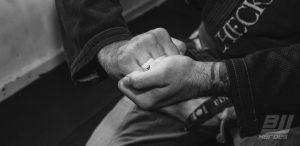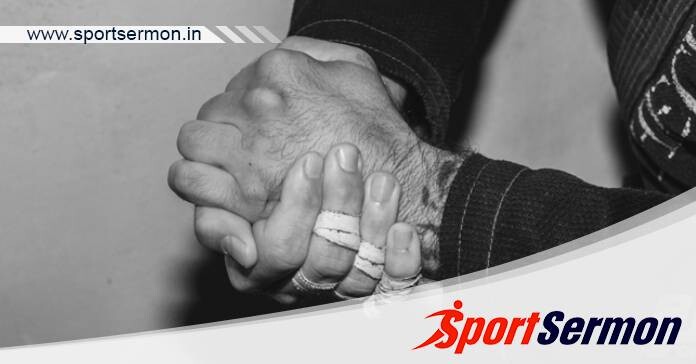Gable Grip in BJJ: When you start learning Brazilian Jiu-Jitsu (BJJ) and Mixed Martial Arts (MMA), you’ll discover that the Gable Grip, often referred to as the Gable Clasp, is a very useful item to have in your toolbox.
This grip, which bears the name of the renowned wrestler Dan Gable, is a potent means of controlling opponents and when used properly, may serve as the basis for a number of other techniques. Gaining proficiency with the gable grip can improve your grappling and provide you an advantage in the cage or on the mat.
Comprehending The Gable Grip

In the gable grip, your thumbs are either flat next to each other or wrapped over your wrist for support. Your fingers are not interlaced; instead, they are positioned across the back of your opponent’s hand. The strength of this grasp and how little effort it takes to keep it are admirable.
This multipurpose grip has a lot of uses, but it’s not very showy. In BJJ and MMA, the gable grip is used to maintain control in a variety of positions, including side control, takedowns, guard passes, and defensive scenarios.
You might also be interested in reading this: Who Are The Top 8 BJJ Guard Passers?
Establishing The Grip
Take the following actions to construct a gable grip:
- With one hand down and the other up, bring your palms together.
- Just below the knuckles, place the flat fingers of both hands on the back of the other hand.
- Whatever gives you the most control, make sure your thumbs are flat on your palms or curled around your wrist.
There are several instances in mixed martial arts and Brazilian Jiu-Jitsu where a gable grip is most effective.
1) While Carrying Out Takedowns
Gable grips may be quite useful while attempting takedowns. Use the gable grip to lock your arms and stop your opponent from sprawling away after you’ve wrapped your arms around their legs while attempting a takedown.
This hold gives you superior control as you push through for the takedown because it stops your opponent from extending their feet apart, which limits their ability to counter or sprawl.
2) To Strengthen Control
Once you’ve taken the guard and gained side control over your opponent, the gable grip can help you keep your dominance. To stop your opponent from framing and fleeing, use the hold to lock your hands together behind their back or around their neck and arm. Your opponent will find it tough to break your grasp because of the compact structure of the grip.
3) To Protect And Evade
Gable grips are not just used as attacking moves. If you find yourself in a vulnerable position, such as having your back taken, you can utilise the grip to control one of your opponent’s arms, preventing them from fully executing chokes or armlocks.
It’s also a good strategy to keep your opponent from putting on a brave face and launching a vicious attack on you if you find yourself behind in the match. Using a gable hold, you may encircle your opponent and stop them from launching an attack.
Take advantage of the fact that MMA regulations demand the fighter in the lead to remain active in order to keep the referee from standing off. Try wrapping your opponent in a gable grip and forcing the referee to restart the bout if your sweeps and reversals aren’t working.
4) To Arrange Transitions And Submissions
For submissions like the arm triangle choke and short choke, the gable grip works quite well. Use the gable grip to lock down the position once you’ve trapped your opponent’s arm and head with your arm. This will free up your hands to concentrate on shifting your body to finish the choke rather than worrying about keeping hand control.

